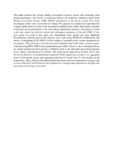| dc.contributor.author | Adetokun, B. B. | |
| dc.contributor.author | Muriithi, Christopher M. | |
| dc.contributor.author | Ojo, J. O. | |
| dc.date.accessioned | 2020-10-22T09:51:27Z | |
| dc.date.available | 2020-10-22T09:51:27Z | |
| dc.date.issued | 2020-03 | |
| dc.identifier.citation | International Journal of Electrical Power & Energy Systems, Volume 120, September 2020, 105988 | en_US |
| dc.identifier.uri | https://www.sciencedirect.com/science/article/abs/pii/S0142061520300387 | |
| dc.identifier.uri | https://www.researchgate.net/publication/339934908_Voltage_stability_assessment_and_enhancement_of_power_grid_with_increasing_wind_energy_penetration | |
| dc.identifier.uri | http://hdl.handle.net/123456789/4450 | |
| dc.identifier.uri | https://doi.org/10.1016/j.ijepes.2020.105988 | |
| dc.description | https://doi.org/10.1016/j.ijepes.2020.105988 | en_US |
| dc.description.abstract | This paper presents the voltage stability assessment of power system with increasing wind energy penetration. The effects of increasing Doubly-Fed Induction Generator-based Wind Energy Conversion System (DFIG-WECS) penetration in the power system have been investigated in this work. Active Power-Voltage (PV) analysis was employed to determine the voltage stability limits in terms of the maximum loadability limit within which stable operation of the grid can be guaranteed as the wind energy penetration increases. The analyses in this work were carried out both for normal and contingency operations of the grid. IEEE 14-bus test system was used as the study case. Simulations were carried out using DigSilent PowerFactory software and results analyses were done using MATLAB. Furthermore, the effects of integrating DFIG-WECS on the loading of essential power system equipment are investigated. The results show that the maximum loadability limit of the study system increases with increasing DFIG-WECS power penetration up to 100%. However, the overloading effects on critical transmission lines presents a definitive limit to the allowable practical penetration level, which is determined to be 28.06%. This limit can be improved to 29.88%, 46.3% and 52.23% by Thyristor-Controlled Series Capacitor (TCSC) application on Line 9–14, upgrading Line 9–14 to double circuit, and upgrading both Line 9–14 and Line 13–14 to double circuit respectively. Thus, effective line enhancement and reactive power compensation strategy such as those offered by FACTS devices are required for a voltage-stable operation of the grid with increasing wind energy penetration. | en_US |
| dc.language.iso | en | en_US |
| dc.publisher | Elsevier | en_US |
| dc.subject | Wind energy conversion system | en_US |
| dc.subject | Renewable energy integration | en_US |
| dc.subject | Voltage stability | en_US |
| dc.subject | Loadability limit | en_US |
| dc.subject | Reactive power compensation | en_US |
| dc.title | Voltage stability assessment and enhancement of power grid with increasing wind energy penetration | en_US |
| dc.type | Article | en_US |

